Subscribe to Our Newsletter
Stay updated with the latest tips and strategies. Get additional discounts and alerts on offers.
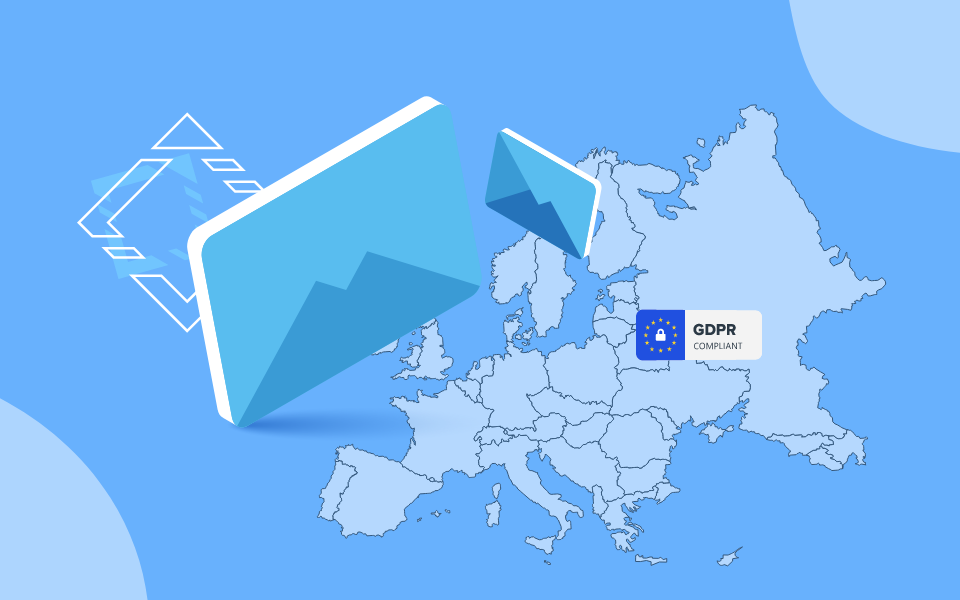
GDPR has been in the picture for a few years now, but some companies and businesses are still unsure how the GDPR works and could affect the traditional email marketing methods. Every company that sells to or operates in the European Economic Area (EEA) should know the GDPR and how it works.
Learning its long-term implications is always an ongoing process. Marketing to companies within Europe has been a constant challenge for B2B businesses. As these companies follow various traditional strategies to network with prospects, GDPR has taken a toll over the standard, reasonable old procedures, and practices for many businesses in the B2B world.
Breaking all the confusion, we would tell you how you can incorporate the GDPR to use email to market to organizations across the EU directly.
GDPR has brought in a big makeover to the digital marketing era. The most significant change to be mentioned has to be data privacy and customer reach. These laws apply to every organization in the EU and anyone who saves or processes data on an EU citizen.
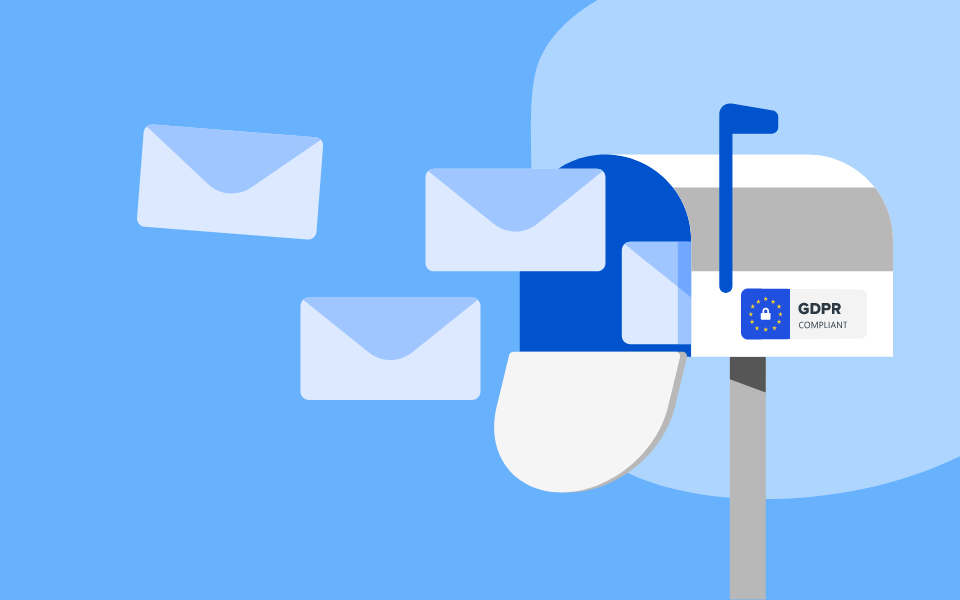
Not just the GDPR, but different countries under the EU follow various other regulations. These inconsistencies give in a tough challenge for businesses, governments, and data protection authorities. While some countries follow a more relaxed approach to B2B email marketing, some other countries opt for stricter rules and regulations.
Therefore, if you are someone who is into selling your product or service to an EU country, you must be well aware of the standards that the country strictly follows.
In an opt-out system, the recipient doesn’t need to take any action to show consent to the email but should be given an easy way to opt-out from receiving email from your business. When an individual opts out, it’s now your responsibility to respect their wish to opt out. If someone doesn’t choose to opt out of your business emails, you could continue sending emails to them as part of your business approach.
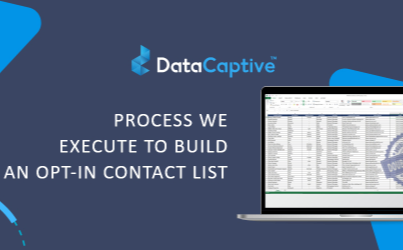
In an opt-in system, the recipient has to take an affirmative(positive) action, for example, check-in a box in action to subscribe to a newsletter or an email, and so on.
This comes in 2 classes:
In a double opt-in check, you have to wait till you receive the two different confirmations to start your business-related communication with the prospect.
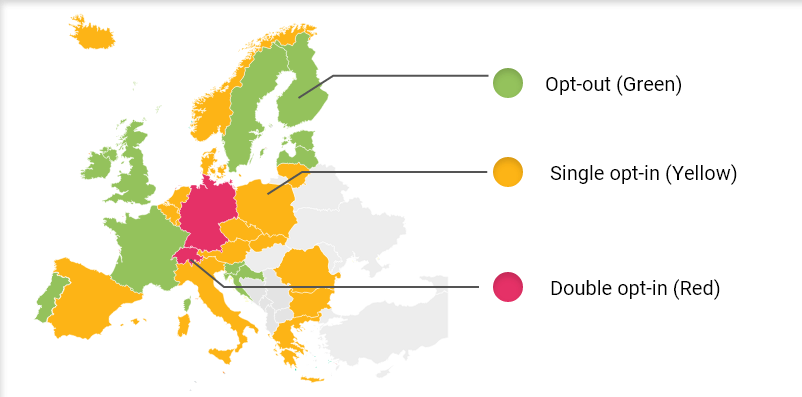
Opt-out countries do not require any prior form on opt-in actions. However, an easy opt-out option should be made available for them to stop receiving any communication from you. In email marketing, the easily opt-out link is made available at the bottom, which the recipients can click to unsubscribe from your communications.
The single opt-in countries would require one action affirming consent to any further business communication through emails.
The double opt-in countries are the countries that have chosen to follow the strictest requirements for B2B communications. For example, you would legally require consent from customers, clear and strong. Without it, you cannot send any marketing communications to businesses and individuals in these countries.
For many reasons, most B2B companies prefer communicating to these countries that fall under the opt-out category. When compared to other countries, it’s easy to communicate and send communication emails to these prospects, including the opt-out option. With DataCaptive, you can always pick these qualitative leads interested in your product or service segmented and customized according to your preferences.

The United States says the businesses in the green zones must comply with the CAN-SPAM act. And about the FTC states, the companies marketing to prospective leads must tell them how to opt-out receiving future communications and honor opt-out requests promptly. There is no opt-in requirement. However, the businesses must follow the GDPR and PECR when contacting individuals in Europe.











Advantage: Businesses can make a profitable move faster in these countries.
Disadvantage: You might end up sending too many unwanted emails. This increases the chances of you being marked as spam creating deliverability difficulty in the future.
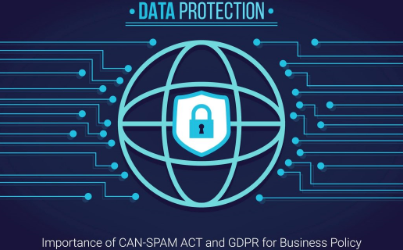
A big chunk of business hub goes into no opt-in class. The United States, the next business hub, and Canada fall into a single opt-in category. The Canadian businesses must follow Canada’s anti-spam legislation (CASL). The CASL says the businesses that are sending ‘commercial electronic messages (CEM)’ within, from or to, Canada should obtain consent from the particular recipient. While including single opt-in consents, businesses could obtain them in written or oral permission from the recipients.
















Advantage: These countries are more likely to be familiar with your business. This eventually causes lesser SPAM levels and fewer deliverability issues.
Disadvantage: Requires a bit of hassle to get the consent action done for B2B businesses from prospects.
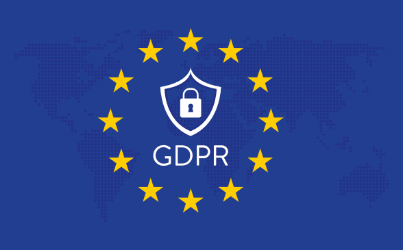
Fortunately, it’s just two EU countries that fall into this category – Germany, and Switzerland. The drawback is that these countries represent sizable business markets. B2B marketers doing business in Germany should provide a double opt-in consent to develop industry-related communication with the customers. Also, in Germany, the customer is informed about their right to opt-out. In Switzerland, the same is applicable. Double opt-in is recommended unless the sender has collected the contact data for a product or service transaction.
Advantage: Contacts that have given in their consent are more engaged and familiar with your brand.
Disadvantage: The business has to take two positive actions as consent from the customer.
In conclusion, make sure you understand the specific email and data protection laws in the EU country you targeted. Though this article helps you comprehend the basics of GDPR in EU countries, we highly recommend you research GDPR countries more thoroughly. This allows your business to achieve GDPR compliance. Feel free to leave your thoughts below in the comments section!
Show Some Love!

Subscribe to Our Newsletter
Stay updated with the latest tips and strategies. Get additional discounts and alerts on offers.
Related Articles
Subscribe to Newsletter
Stay up to date with the latest marketing, sales, and service tips and news.
